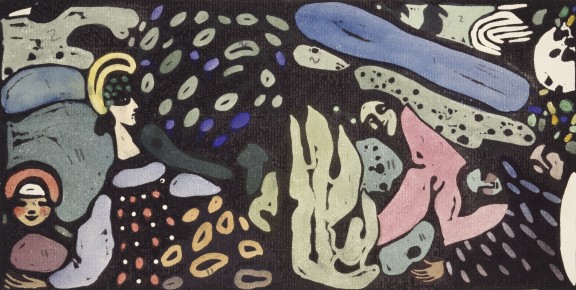Vassily Kandinsky was central to the development of modern art in the 20th century. This exhibition focuses on a less familiar phase of Kandinsky’s art, with works from his early career.
Especially in his prints, Kandinsky experimented with form, colour and line, laying the groundwork for the abstract idiom that would later make him famous. With works that have never been shown in Norway before, this exhibition is a unique opportunity to explore a lesser-known aspect of Kandinsky’s art.
In 1896, Kandinsky saw Claude Monet’s painting "Haystacks" in an exhibition of French impressionists in Moscow. That same year, he saw a production of Richard Wagner’s opera "Lohengrin". Deeply impressed by both experiences, Kandinsky decided at the age of thirty to travel to Munich to become an artist.
In Munich, he worked extensively with printmaking, especially with xylography, woodcut, and linocut techniques. These are media that invite simplification of surface, form, and line, and Kandinsky’s exploration of the processes gradually led him to a more symbolic and abstract idiom. You can see several of his works from this period in the exhibition.
The exhibition is based on a loan from the Centre Pompidou in Paris and has been developed in collaboration with curator Anne Montfort-Tanguy.
A fairy-tale world
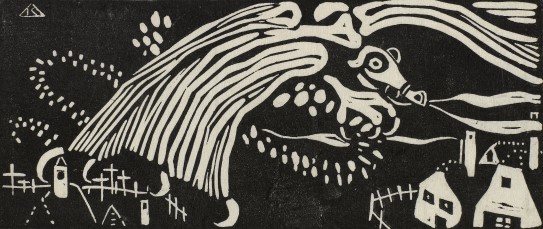
As a child, Kandinsky listened with fascination to fairy tales recited by his German speaking grandmother. Beside memories from childhood, folk art became a major source of inspiration for him. Legends and myths figured significantly in his early visual universe. Kandinsky deliberately chose symbols from these genres as a starting point for new narratives. His compositions arose at the intersection between figuration and unfettered imagination, resulting in scenes with fantastical flying creatures, witches, and horsemen.
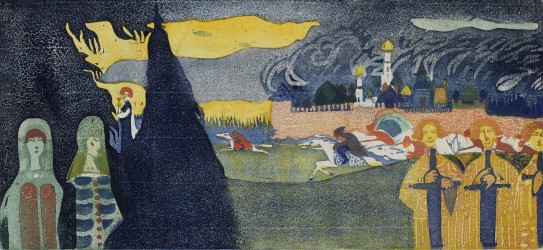
Troubled times
Kandinsky’s formative years coincide with a period in Russian and European history of political upheavals and growing social crisis. For Kandinsky, art offered a point of tranquillity amid the chaos of contemporary life and a route to a more spiritual approach to life and art. He collected his thoughts and ideas on this subject in his famous book "Concerning the Spiritual in Art", published in 1912.
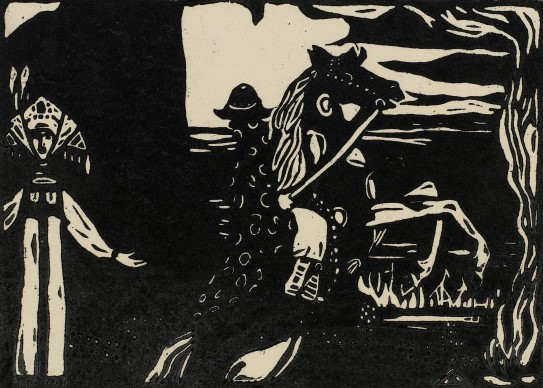
On horseback
Horses and riders form a recurrent theme in Kandinsky’s art and a unifying thread throughout this exhibition. As a motif, the rider is already present in Kandinsky’s private collection of religious Russian art, and in the early years of the 20th century the figure begins to appear in his work as well. Treatments of the motif vary and evolve, eventually suggesting the name “Der Blaue Reiter” (The Blue Rider) for an almanac first published in 1912. For Kandinsky, the rider became a symbol of struggle and power, but also of artistic work and freedom.
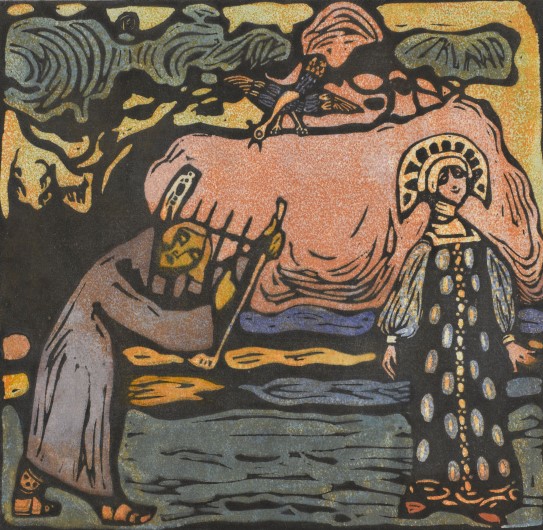
Sounds
Kandinsky’s interest in music followed him throughout his career. He developed a close friendship with the composer Arnold Schönberg, which was of great importance for his artistic development. This inspiration found clear expression in "Klänge" (Sounds), a compilation of poems and prints that Kandinsky published in 1913. He himself described the book as a “musical album”. Here, he translated the moods and tones of music into lines, movements, contrasts, and rhythms on the picture surface.
Vassily Kandinsky (1866–1944):
- Born in Moscow, but moves with his parents to Odessa at the age of five.
- Studies law and economics in Moscow, and travels in conjunction with his education to Vologda in 1889 to learn about peasants’ rights and relevant legislation.
- The culture, people, and nature that he discovers in the rural areas north-east of Moscow appear to him unaffected by the modernisation of the period, a reservoir of originality and power that make a strong impression on him.
- At the age of thirty, he travels to Munich to study art.
- There he establishes the artist group “Phalanx” and organises exhibitions with works by, among others, Akseli Gallen-Kallela, Vincent van Gogh, Félix Vallotton and Henri de Toulouse-Lautrec.
- The next few years are marked by a busy exhibition schedule and frequent travel, both within Germany and to France, Tunisia, Russia, and elsewhere. For a period he withdraws to Murnau together with fellow artist and partner Gabriele Münter.
- In 1912, Kandinsky establishes “Der Blaue Reiter” (The Blue Rider), a group of German expressionist artists, together with Franz Marc. This helps to consolidate his position as a prominent contemporary artist.
- At the outbreak of the First World War, he has to return to Moscow, since Russia and Germany are on opposite sides of the conflict.
- The October Revolution of 1917 leaves Kandinsky in serious financial difficulties, and in 1922 he accepts a teaching position at the renowned Bauhaus school in Weimar, where he works until its closure by the Nazis in 1933.
- Kandinsky moves to Paris. He eventually becomes a French citizen and spends the rest of his life in France.
